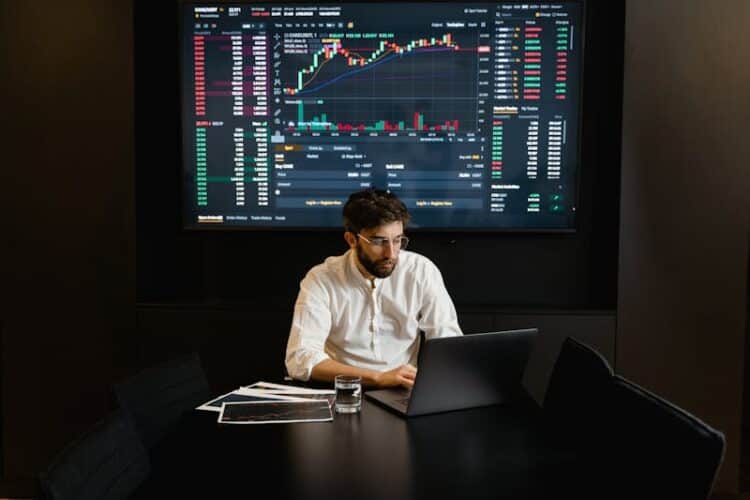For years, profitable foreign exchange trading seemed out of reach for individual traders. They simply lacked the economic acumen and constant market monitoring needed to succeed. So looking for a way to overcome this issue is completely reasonable. That brings us to “MetaTrader” and “Forex EAs”.
Now, times have changed with platforms like MetaTrader 4 and 5. By enabling automated Expert Advisors, these systems now let small-scale traders access the trading power once reserved for experts alone. Suddenly, advanced analytical strategies and split-second decision-making don’t require years of financial training.
Understanding EA Trading
Expert Advisors are something akin to customizable robo-traders. You teach the algorithms your preferred trading rules – whether simple things like price moving averages or complex predictive modeling – and the advisors handle the rest. They’ll scour the massive Forex sphere for opportunities, then execute the indicated trades without emotion or hesitation.
While risk remains inherent to any market speculation, these automated assistants promise to minimize common pitfalls like overtrading. By letting advanced analytics and lightning-quick automation do the heavy lifting, Expert Advisors open Forex to an investing public once left outsiders to this trillion-dollar domain.
The Benefits of EA Trading
Here are a few reasons why EA trading is becoming more and more popular:
1. Automation and Efficiency
The automation enabled by EAs stands as a prime advantage. By continuously monitoring markets and executing trader-defined strategies 24/7 without human oversight, EAs ensure opportunities are not lost should the trader briefly divert attention. There’s comfort in knowing your trading approach persists even when you sleep or take a well-deserved break.
Additionally, EAs can rapidly analyze incredibly complex market data flows and use that information to make informed trade decisions in the moment. That level of responsive computational power exceeds human limitations. The efficiency gains translate to improved trade execution and resulting performance.
2. Emotionless Trading
EAs obediently follow the rules and strategies they’re programmed with, period. Unlike humans, they won’t deviate based on emotion or impulsive instincts. This consistent logic-driven approach can really help mitigate those costly knee-jerk tradespeople sometimes make when feeling scared or greedy.
3. Backtesting Capabilities
Backtesting allows traders to evaluate an EA’s trading strategy using historical price data, providing an objective window into how it might handle different real market conditions. The insights gained from backtesting aid tremendously in refining trading rules and settings so the EA performs optimally when it counts. It’s like putting your strategy through a simulator before game time.
Challenges of EA Trading
While EA trading offers numerous benefits, it is not without its challenges. Understanding these challenges is crucial for traders to effectively manage their risks and maximize their returns.
1. Over-Optimization
Excessive tuning of an EA to match past data can seriously backfire. Though it may achieve stellar hypothetical returns, that performance won’t necessarily hold up as market dynamics shift. Like overfitting a machine learning model, over-optimized EAs become rigidly molded to historical conditions. Maintaining flexibility and accountability to fresh data is key.
2. Market Volatility
Despite the adaptive capabilities coded into EAs, extreme price swings can still throw them for a loop. When volatility spikes, even the smartest EA may struggle to enter or exit trades at intended levels. Unexpected slippage and execution issues can dent performance. Traders deploying EAs must prepare for turbulent markets.
3. Technical Issues
Like any heavily technology-reliant domain, EA trading is vulnerable to IT troubles. Internet outages, buggy platforms, server hiccups – all can freeze trading algorithms in their tracks at inopportune times. Redundant connections and rigorously vetted software lessen this threat. But some risk remains.
4. Regulatory Concerns
Watchdogs strive to ensure algorithmic trading adheres to fair practices without unduly manipulating markets. While most retail traders operate ethically, regulators continue targeting potential violations. Keeping EAs in line with evolving oversight measures is wise to avoid legal repercussions down the road.
The Future of EA Trading
The outlook for EA (Expert Advisor) trading appears bright, as technological advancements continue to boost the efficiency and capabilities of automated trading systems. Several emerging trends are poised to influence the future landscape of EA trading:
1. Artificial Intelligence and Machine Learning
The integration of artificial intelligence and machine learning into EAs could be a total game-changer. These technologies allow systems to mimic human-like logic – looking at complex markets and adapting their strategies over time. It’s pretty mind-blowing to think EAs might someday analyze data as intuitively as an expert trader. This could seriously take automated trading to the next level in terms of performance.
2. Integration with Big Data
Combining EAs with big data is another innovation with tons of potential. Datasets these days are massive. By using them to spot obscure trends and connections that humans might miss, EAs could make way smarter calls around trading decisions and managing risk. The insights unlocked could give traders a big competitive edge.
3. Increased Customization
It’s understandable that traders want more tailored and customizable EAs aligned with their personal goals and comfort zones. As this demand grows, we’ll likely see platforms enable traders to tweak settings and dictate strategies rather than taking a one-size-fits-all approach. More control and customization means individual traders can follow plans they feel good about.
4. Enhanced Security
No doubt, security has to be a prime consideration, given how dependent trading is on technology. It’s expected that safety measures against hacking, unauthorized access and preserving data integrity will only intensify over time. Things like encryption, authentication protocols and surveillance systems will hopefully keep trader interests protected.
Conclusion
EA trading clearly holds transformative potential for accessing forex markets, boosted by advancing automation and analytics. However, effectively realizing broader participation without compromising integrity requires confronting complex technical and regulatory challenges.
Ultimately, the trajectory of EA trading may hinge on responsibly leveraging AI/ML to improve systems while ensuring transparency and security. If the most rupturing risks of over-optimization and volatility can be mitigated through enhanced modeling and safeguards, there is reason for optimism. Still, skepticism and caution are warranted to match the enthusiasm.
- Sources:
- (24) Best Forex EA Robots | LinkedIn
- (PDF) Revolutionizing Forex Trading: Harnessing AI for Seamless Market Automation (researchgate.net)
- How Artificial Intelligence has Changed the Forex Trade (mt4copier.com)
- View of Revolutionizing Forex Trading: Harnessing AI for Seamless Market Automation (irjaeh.com)















